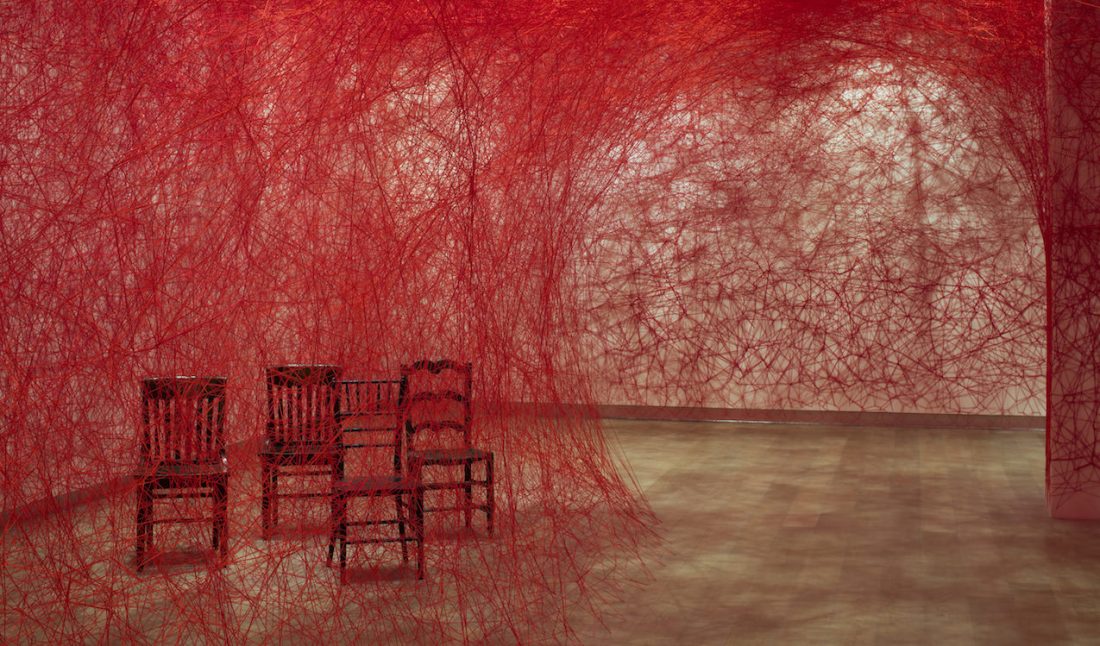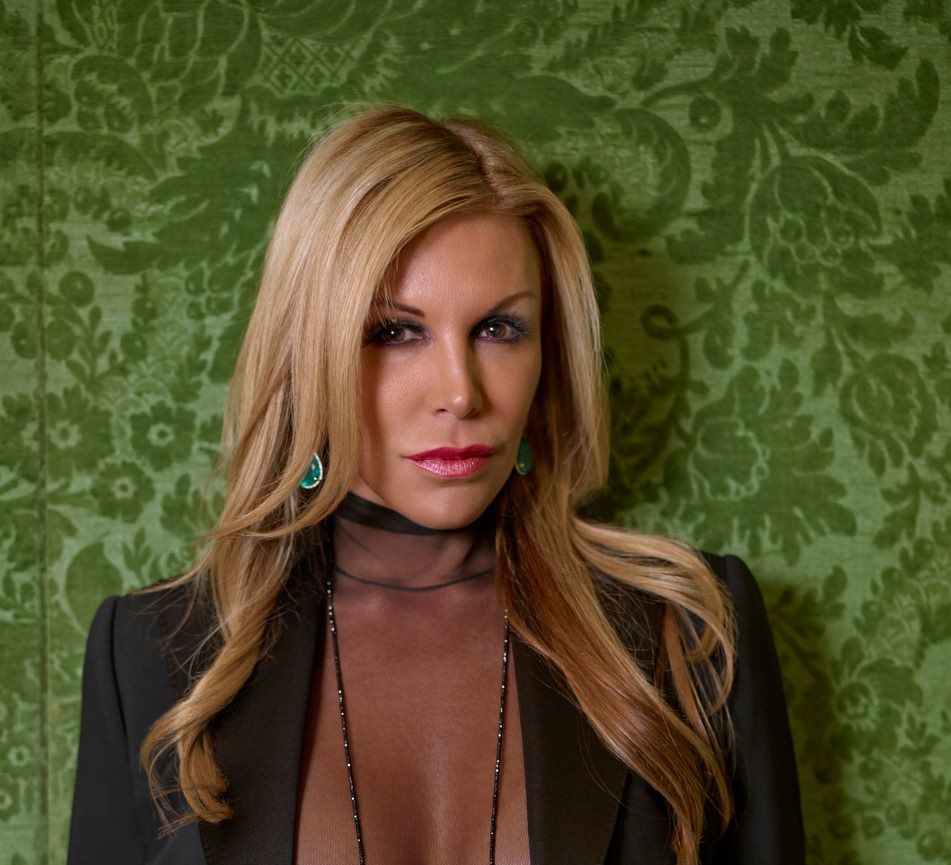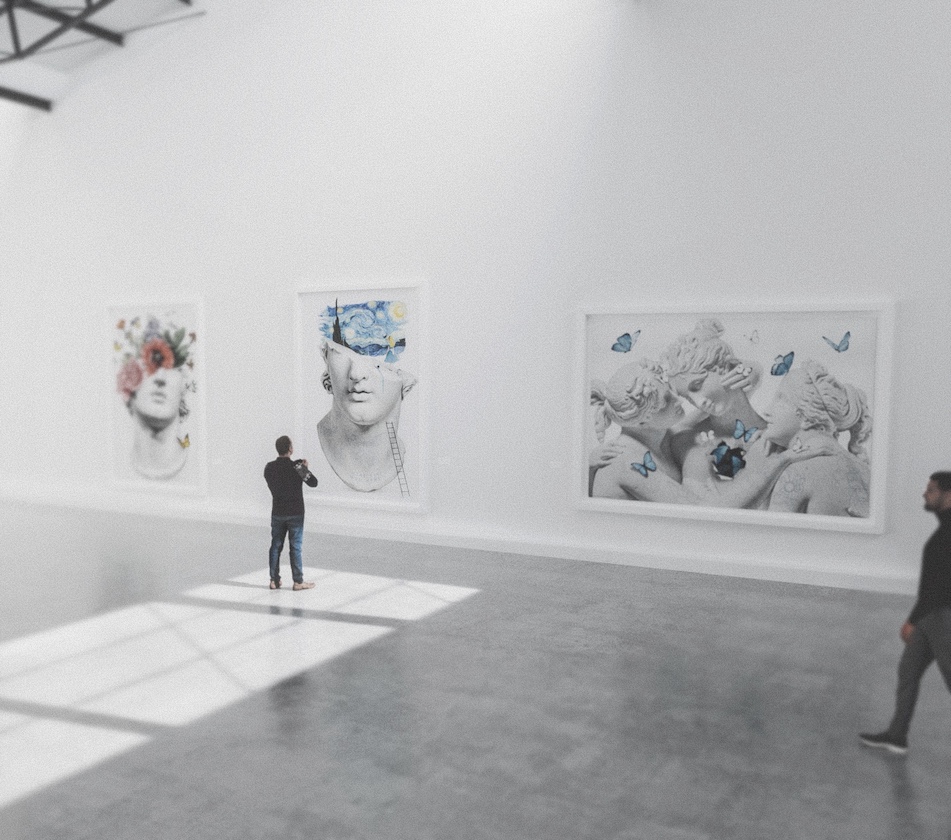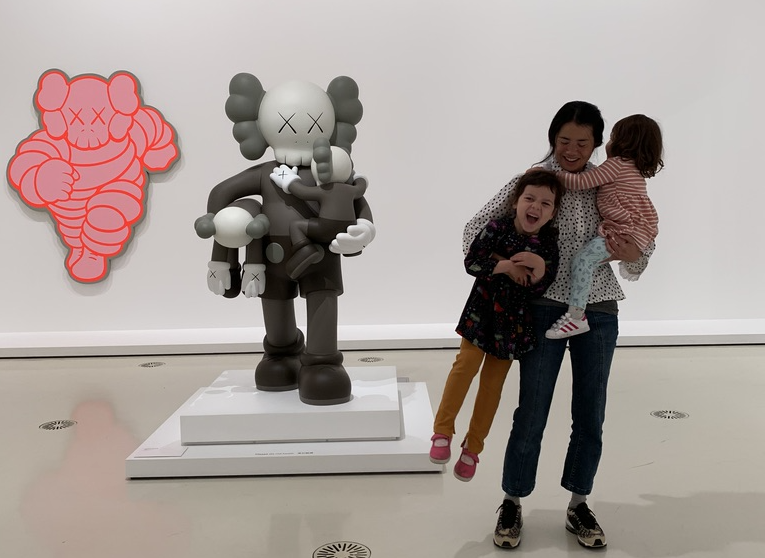The Berlin-based artist Chiharu Shiota recently presented her solo show “Inner Universe” (May 30–July 25) at Galerie Templon in Paris. Included in the exhibition were new drawings created in isolation amid COVID-19, as well as objects and installations. Typically, Shiota is recognized for her large-scale installations of yarn. But amid isolation brought on by COVID-19, the artist got back to her basics and began drawing daily, creating over 100 new works.
Whitewall spoke with Shiota about how her creative journey began with painting, why she confronts nostalgia and loss through art, and how “Inner Universe” connects people around the globe.
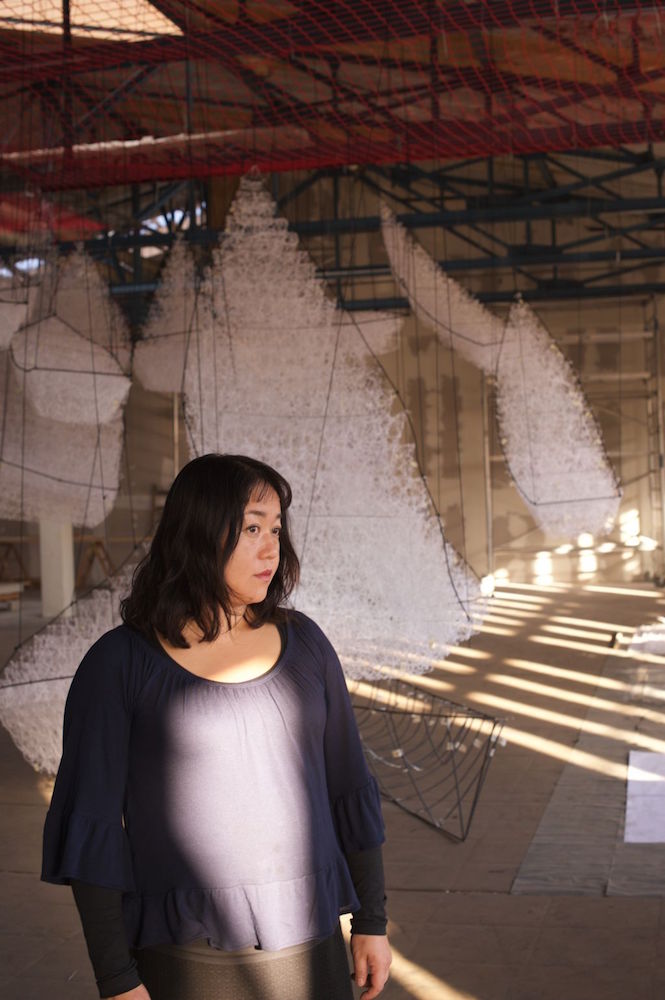 Courtesy Galerie Templon, Paris – Brussels © Adagp, Paris
Courtesy Galerie Templon, Paris – Brussels © Adagp, Paris
WHITEWALL: Can you tell us a bit about your start in the art world?
CHIHARU SHIOTA: I originally studied painting, but in the second year of university I felt stuck. Painting had no meaning to me anymore. It was just paint on a canvas. If I added red or blue, there was no difference. It was just paint, nothing more. Painting as an art skill has so much history, but I did not believe it was part of my history.
During an exchange year in Australia, I had a dream of being trapped within a two-dimensional painting. Oil paint was pouring over me, and I could not breathe. This inspired me to create “Becoming Painting.” I covered myself with red enamel paint; the paint stained my skin and hair for weeks. I was in control to move around the painting. This was a very important moment because I understood that I could make art with my body.
WW: In your work, there is an ethereal feeling to it; a feeling of nostalgia and loss, among other emotions related to life and death. Can you tell us a bit about when or why this first started appearing in your work?
CS: When I was I child, I would visit the grave of my grandmother with my parents. We would clean the area and remove the weeds. When I touched the earth, I could feel the presence of my grandmother. I had the feeling that my grandmother wanted to continue to live through the plants that grow on top of her grave. I was very scared of this feeling of presence.
When I was older, I understood this feeling. When people die, the memory of them is much stronger. Their physical body does not exist anymore, but their presence still surrounds you and is in the objects that they have left behind.
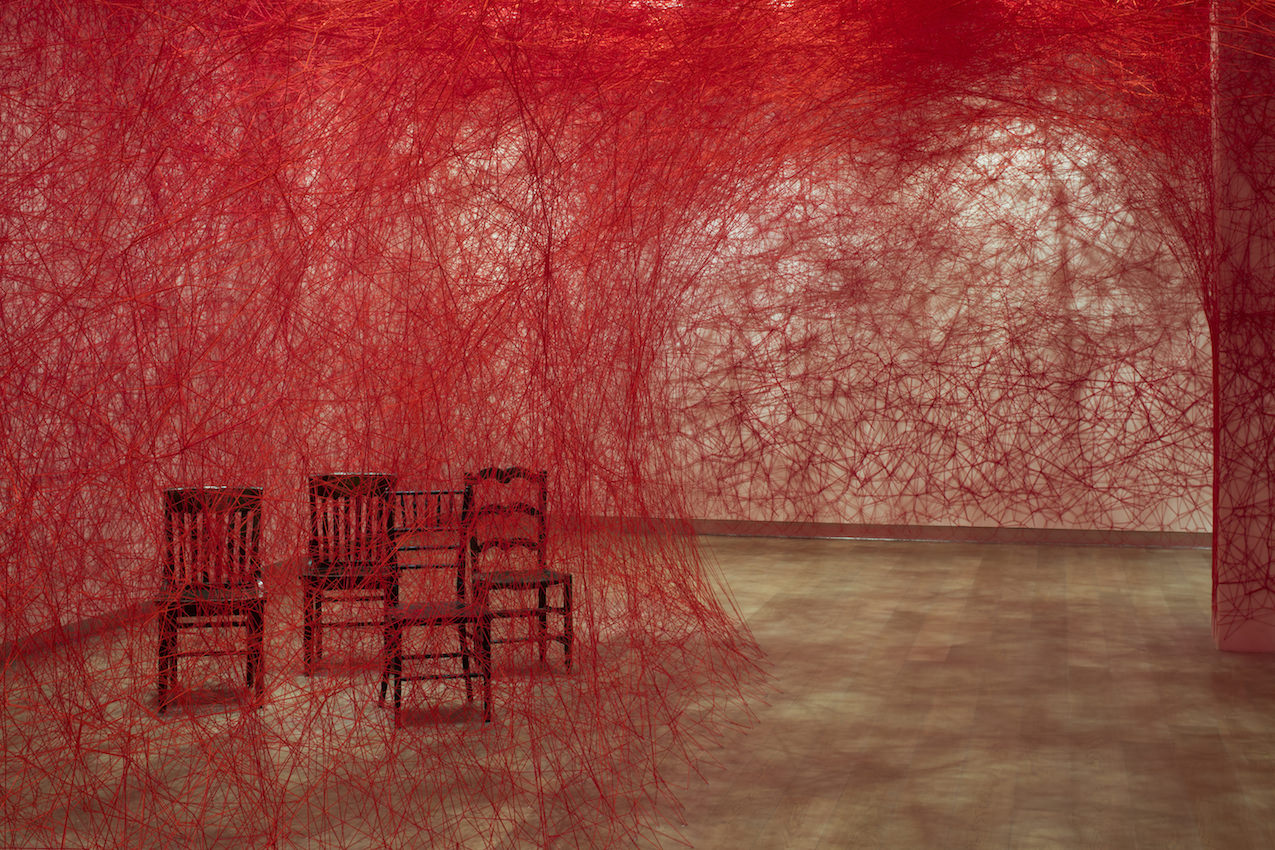 SCAD Savannah – Winter 2017 – deFINE art – Exhibitions – Chiharu Shiota – “Infinity Lines” – Documentation – SCAD Museum of Art – Photography by John McKinnon
SCAD Savannah – Winter 2017 – deFINE art – Exhibitions – Chiharu Shiota – “Infinity Lines” – Documentation – SCAD Museum of Art – Photography by John McKinnon
WW: Tell us a bit about your works involving thread. Where did this concept come from? What do you hope these pieces convey?
CS: I began using thread because the single line of thread reminded me of a pencil line in a drawing. It is like drawing in the air, in an unlimited space.
WW: Tell us a bit about “Inner Universe.”
CS: The exhibition “Inner Universe” was inspired by the thought of the outer universe connected with our inner universe. I believe everybody has an inner universe. They both maybe look different, but I feel as if it is the same world.
The exhibition focuses on the body and my relationship to it. I have created glass objects that resemble organs and have created bronze moulds of my hands. In the past, I have had to overcome a serious medical condition and during that time, I reflected on the relationship of my body and my connection to the universe. The works symbolize my feelings, and I believe also the experiences and feelings of others.
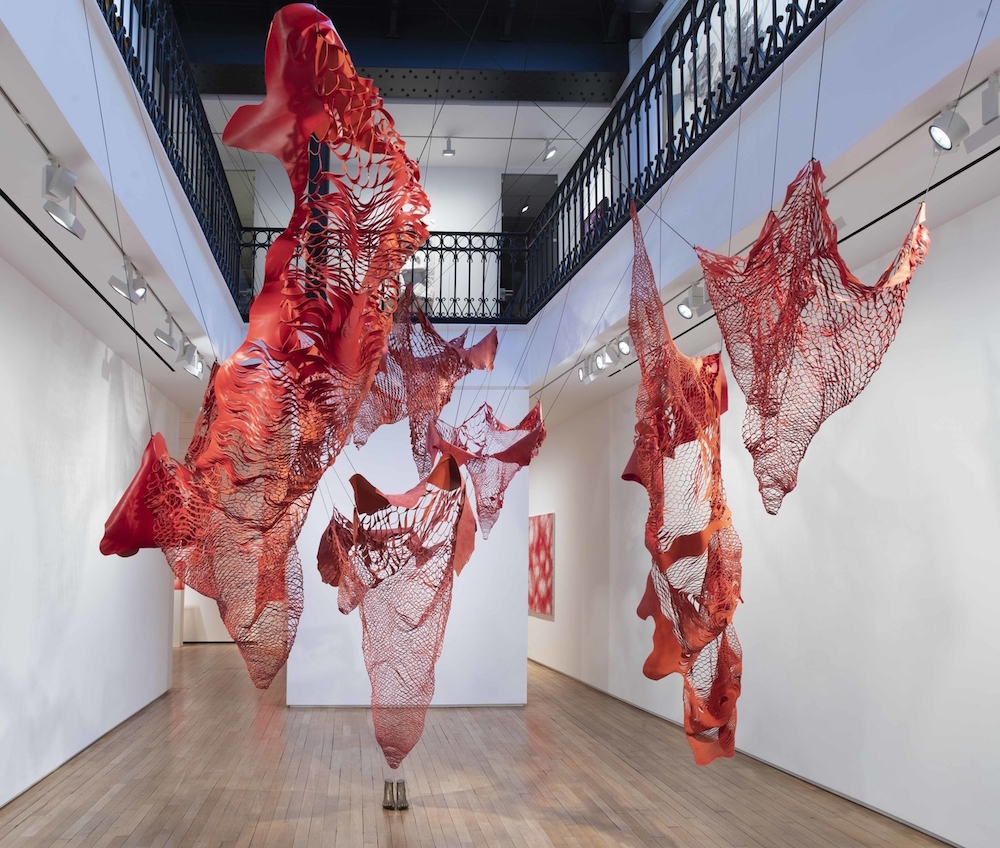 Installation view, courtesy of by B. Huet-Tutti
Installation view, courtesy of by B. Huet-Tutti
WW: We recently took a trip to Japan, visiting your hometown of Osaka. Does your Japanese upbringing impact your work or the type of expressions that are embedded in its context?
CH: I am not sure how my cultural heritage has influenced my work. Maybe because in Japan I was taught the Buddhism philosophy, I have a different relationship with nature. In Buddhism, there is not one God, but life is much more connected with nature and there is no end; people are reborn.
But I don’t think about my Japanese heritage often. I don’t define myself this way. I see myself rather as an artist.
WW: How did you handle isolation brought on by COVID-10?
CH: It was difficult in the beginning, all my planned exhibitions, I think about eight in total, were postponed to next year or even later and current shows were all shut down. However, some museums made virtual tours of the exhibitions like the Busan Museum of Art. They made a beautiful virtual tour of “The Soul Trembles” and made it available for the public on their YouTube channel. The CCBB in Brazil also created a virtual tour of the various installations and artworks which are presented at the touring exhibition “Lifelines”, it should be online soon as well.
I had planned to fly to an exhibition every other week this year, only spending one or two weeks at a time in Berlin until the summer, but everything was stopped from one moment to the next. This provided me with the opportunity to stay at home. Now, I am spending much needed time in Berlin with my family, and I am drawing every day. I have not drawn so much in a very long time. I have now made 100 drawings already.
I stay mostly at home, but I do go outside twice a week to go to my studio. I ride my bike there, so I can avoid human contact. I can draw and work mostly from home, but I have to prepare some things at the studio. Of course, I mostly stay connected on the phone through text, chat and email.
WW: Can you tell us a bit about these new drawings?
CH: I have been drawing different shapes. They represent the universe but are also similar to a cell of the body. From this cell, a line or thread is connected to a human shape. It is a visual image of the connection between the self and nature, the inner and outer universe.
WW: Aside from drawing every day, were you able to make work at this time?
CS: I have been very creative. I think and research and sketch. It has been a very productive time. All my work is personal and private, so I am inspired by my life and by my home at the moment. I am lucky that I can work from home.
However, I might also have to create new work at my studio that I can send to the museums and galleries. It is very challenging because I usually make all my art directly at the exhibition space and not in my studio. But this situation has forced me to be creative and rethink aspects of my work.
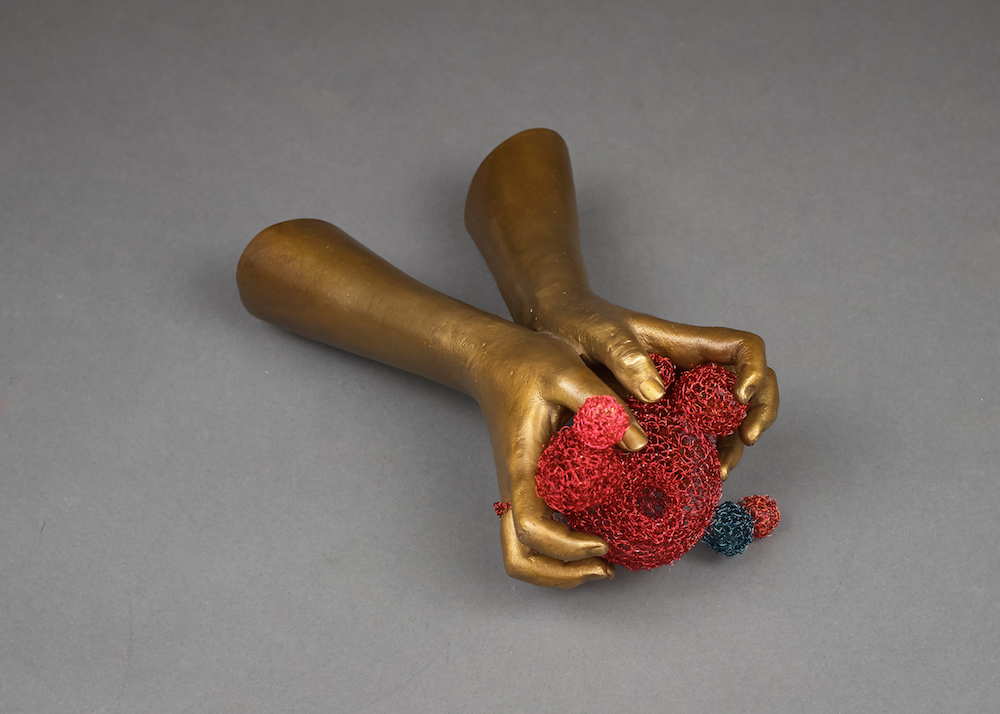 Chiharu Shiota’s
“In the Hand”, (2020), Bronze et fil de métal / bronze and metal wire, 13,5 x 21,5 x 29,5 cm; 5 3/8 x 8 1/2 x 11 5/8 in.
Chiharu Shiota’s
“In the Hand”, (2020), Bronze et fil de métal / bronze and metal wire, 13,5 x 21,5 x 29,5 cm; 5 3/8 x 8 1/2 x 11 5/8 in.
WW: You have eight exhibitions coming up. What are you exploring in those? Is there a common theme?
CS: Future exhibitions will be shown in China, Vietnam, South Korea, Italy, and New Zealand. They do not have a common theme; every exhibition will show different works or installations that have been created for the venue. The dates of my solo exhibition “The Soul Trembles” at the Queensland Art Gallery | Gallery of Modern Art, in Australia; The Museum of Modern and Contemporary Art in Nusantara, Indonesia; and the Taipei Fine Art Museum, in Taiwan have also been postponed to 2021 and 2022.
WW: What were you listening to, reading, or watching?
CS: Of course, I am watching the news every day. I usually watch the news on ARD with my family together. It is important to know what is happening and how it will continue.
I am also very active on social media, like everybody else. I spend time on Facebook, Instagram and Pinterest. I also enjoy watching TED Talks. There are many fascinating topics. Recently, I watched Guy Winch talk on “Emotional First Aid,” which was very good. I recommend watching it. He talks about how we favorize the body over the mind and which consequences that has. But I am also watching many movies with my daughter.
I have been reading lots of books. Currently, I am reading the booklet which was published along with the Innovative City Forum. Fumio Nanjo, the former director of the Mori Art Museum spoke at his forum on “How Humanity Will Live Tomorrow.” It is very good.
WW: Did you cook anything of note?
CS: A lot of beans—soya beans, red beans. and black beans. They are like the meat from earth. The Japanese cuisine includes a lot of beans—even in sweets, we include red beans. I cook Soya beans with seaweed or other traditional Japanese foods. This is very unusual for me; I seldom had the time to cook before.
WW: Where are you finding hope or inspiration?
CS: Unfortunately, I think something like this was about to happen at some point. We have seen similar viruses in the past like the bird flu or the swine flu and many virologists predicted this for many years. It is a very tragic situation for so many people, it is important to stick together and help each other. The situation will get better. I am looking forward to the future, to my exhibitions, and to meeting people again.






